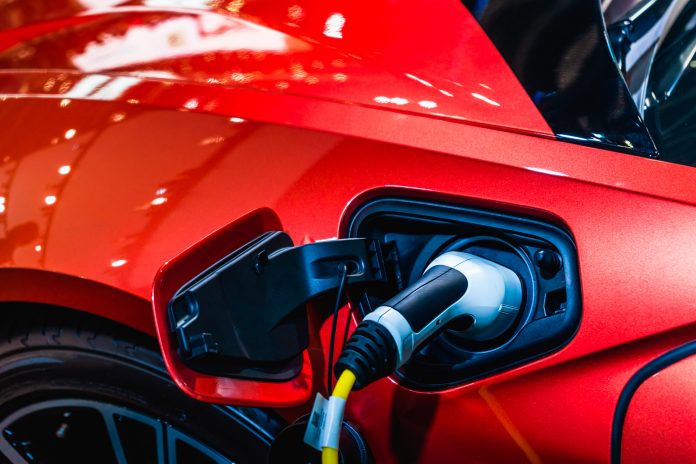Horst Pfluegl, Global Research Program Manager at AVL List GmbH, charts the OBELICS project which is contributing to the development of next-generation electric vehicles
When it comes to the impact electric vehicles have on society, we know that they are important to contribute towards stopping global warming and reduce both emissions and environmental pollution. Currently, about a quarter of the greenhouse relevant CO2 emissions are caused by transport and with the introduction of electrified vehicles – either fully electric or hybrid – mankind can, therefore, reduce CO2 emissions significantly. It is also important that electrical energy for charging and production must be shifted continuously towards renewable sources, to gain a benefit for the whole life cycle scenario.
How does OBELICS contribute to this CO2 reduction?
The OBELICS project partners investigate methods and tools to further reduce CO2 emissions (up to 20%), by increasing the energy efficiency of electric and hybrid vehicles in comparison to state-of-the-art ones. This is achieved by virtual design techniques, simulation models and advanced testing methods specifically for electrified vehicles, which are applied throughout the entire development process. Additionally, a reduction of development efforts (up to 40%) is aimed at, which is realised by investigating advanced engineering methods, faster model-based testing approaches and modern development tools (e.g. modelling SW, test benches, testing devices, etc.).
Why is the virtual design of electric vehicles so important?
With virtual design techniques, automotive engineers can study and assess the desired behaviour of electric cars even before they are built, reducing the need for many physical prototypes. All components of the electric powertrain – e-motor, battery, inverter, control unit etc. – are represented virtually by means of physical-based models. These models enable the virtual design and simulation of the entire vehicle like in real life. The physical models represent the mechanical, electrical, magnetic and thermal behaviour of the components very realistically and with a high level of accuracy. Even the interactions between different physical phenomena and effects are taken into account with these models. Therefore, they act as a decision basis for the selection of possible vehicle candidates that are investigated and realised later in detail.
Which development stages are affected by OBELICS research?
In OBELICS, we investigate four different engineering categories that are relevant to the design and development of an electric vehicle. Firstly, there is the sizing of electrical components and design of e-drive architectures, where optimal electrical components are constructed and selected. Afterwards, the complete vehicle model is run with realistic driving cycles in a virtual simulation to study its behaviour under various conditions. During this stage, e-components can be optimised by simply varying the parameters of the simulation models. By doing measurements of e-components in parallel, models can be verified and improved easily, if necessary.
As a third state in the project, the safety and performance of e-drivetrains are studied. Battery safety, in particular, is improved by introducing a new FME (failure mode and effect analysis) method with a probabilistic assessment approach, which has been named prob.FMEA.
Additionally, the battery is tested under realistic combined mechanical and electrical test conditions, i.e. the battery is tested under mechanical vibrations and shocks at the same time, so electrical load profiles with different loads and frequencies are introduced into the battery pack. This allows the study of cross-influences of shock, vibration and electrically caused temperature variations and cell swelling.
As the last topic, OBELICS investigates the optimal e-motor and inverter design in interaction with the controller architecture of the entire e-powertrain. Very accurate models of the e-motors magnetic and electrical circuits and the inverter power electronics, together with thermal behaviour models of the components, are the basis for these investigations. Finally, the safety of electrical powertrains is dependent on a well-designed controller architecture that allows handling all possible failure modes of a powertrain appropriately.
Which technical challenges are tackled within the project?
We are working with the latest developments and technologies used for modern e-powertrains. As such, high-speed engines with high-frequency inverters are state-of-the-art for electrical drives. This leads to higher efficiencies and lower losses in the e-motors and inverters and, therefore, enables a longer driving range. New materials like silicon carbide (SiC) are used for powertrain inverters and test-equipment for these components as well. Meanwhile, engine speeds above 20,000 rpm are becoming a kind of new standard.
For the models, we combine very accurate 3D-modelling capabilities with simpler 1 or 0D-models of vehicle components for the design process. Later, when the models need to run in real-time in parallel to real components, the conversion into fast real-time models must be done. This step can be supported with fully or semi-automatically converting procedures that make this work more efficient and easier.
The model exchange between suppliers and carmakers is also necessary for this process and is enabled with standardised interfaces like FMI/FMU. Even the input/output definitions of the models need a kind of standardisation, otherwise, the models are not compatible for exchange. OBELICS collaborates also with other European Union (EU) projects that are dealing with similar research topics in order to create synergies and enable faster standardisation beyond project boundaries.
How does OBELICS assure the impact of the research work in new e-vehicles?
OBELICS build a consortium that has a very high practical dimension and relevance. Different car manufacturers, like Renault/Volvo, Fiat and Ford are partners in the project and provide their requirements for new e-vehicles, which are directly investigated within the project. Further, there are renown tier 1, engineering- and equipment providers like Bosch, Valeo, AVL and Siemens that are heavily involved in the design of new electrical components, test equipment, test tools and test procedures on a daily basis. Several academic and scientific partners with individual specialised know-how in certain areas complete the OBELICS team and form a great centre of excellence and know-how. With 17 realistic use-cases, the work is bundled in a good way to work on real and relevant solutions for new electric vehicles. All use cases will present their results and contributions at the end of the project. The gathered methods and solutions are published over several communication channels, scientific publications, a project website and by participating in common events with other EU-research project partners. Hence, it is guaranteed that the new methods and know-how will be used in new developments and lead to the next-generation clean and affordable electrical and hybrid vehicles.
Project Key Facts
Name: OBELICS
Budget: €9,077, 496
Start: 1.10.2017
End: 30.09.2020
Partners: AVL (Coordinator),
CRF, Fiat, Ford, Renault, Volvo,
AVL SFR, Bosch, Siemens NV/SAS, Uniresearch, Valeo, CEA, Fraunhofer, FH-Joanneum, National Institute of Chemistry, Uni Ljubljana, Virtual Vehicle, Vriej University Brussels
Countries: 10
Coordinator: Horst.Pfluegl@avl.com
This project has received funding from the European Union’s Horizon 2020 research and innovation programme under grant agreement No. 769506.
Please note: This is a commercial profile











